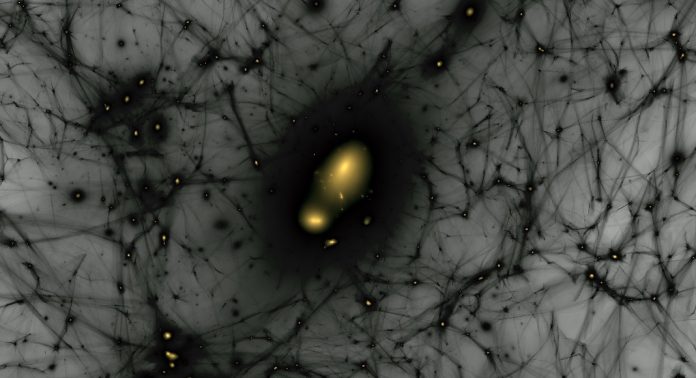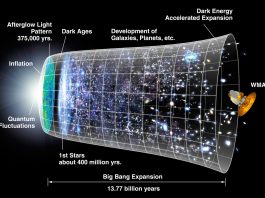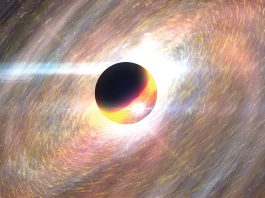Based on satellite galaxy simulations, scientist have made a stronger connection between the size of galaxies and the dark matter halos that surround them.
Large masses in space often pull objects, such as planets and moons, into orbit. This rule also applies to galaxies, those that are in the gravitational field of larger galaxies are known as satellite galaxies.
The Large Magellanic Cloud (LMC), is a relatively large satellite galaxy which is visible from Earth’s southern hemisphere. Measurements from the European Space Agency’s Gaia mission have shown that the LMC brought at least six satellite galaxies with it on its initial approach towards the Milky Way.
New observations of the LMC
Researchers at the Department of Energy’s SLAC National Accelerator Laboratory and the Dark Energy Survey have used observations of galaxies around the Milky Way to place tighter constraints on the connection between the size and structure of galaxies and the dark matter halos that surround them.
Researchers have formulated a new theory based on existing scientific models, if correct, the Milky Way should have an additional 150 or more satellite galaxies awaiting discovery by next-generation projects such as the Vera C Rubin Observatory’s Legacy Survey of Space and Time.
“We know some things about dark matter very well – how much dark matter is there, how does it cluster – but all of these statements are qualified by saying, yes, that is how it behaves on scales larger than the size of our local group of galaxies. And then the question is, does that work on the smallest scales we can measure?” said Ethan Nadler, the study’s first author and a graduate student at the Kavli Institute for Particle Astrophysics and Cosmology (KIPAC) and Stanford University.
Simulating millions of universes
The possibility of detecting a hierarchy of satellite galaxies first arose when DES detected more satellite galaxies in the vicinity of the Large Magellanic Cloud than previously assumed. These findings suggest that there are more satellites than there would be if they were randomly distributed throughout the sky.
To study the LMC’s satellites more thoroughly, Nadler and his team analysed computer simulations of millions of universes. Those simulations model the formation of dark matter structure that permeates the Milky Way, including details such as smaller dark matter clumps within the Milky Way that are expected to host satellite galaxies.
To connect dark matter to galaxy formation, the researchers used a flexible model that allows them to account for uncertainties in the current understanding of galaxy formation, including the relationship between galaxies’ brightness and the mass of dark matter clumps within which they form.
The simulations suggested that the LMC first approached the Milky Way about 2.2bn years ago, consistent with high-precision measurements of the motion of the LMC from the Hubble Space Telescope.
If the simulations are correct, Nadler said, there are around 100 more satellite galaxies hovering around the Milky Way. The discovery of those galaxies would help confirm the researchers’ model of the links between dark matter and galaxy formation and likely place tighter constraints on the nature of dark matter itself.









